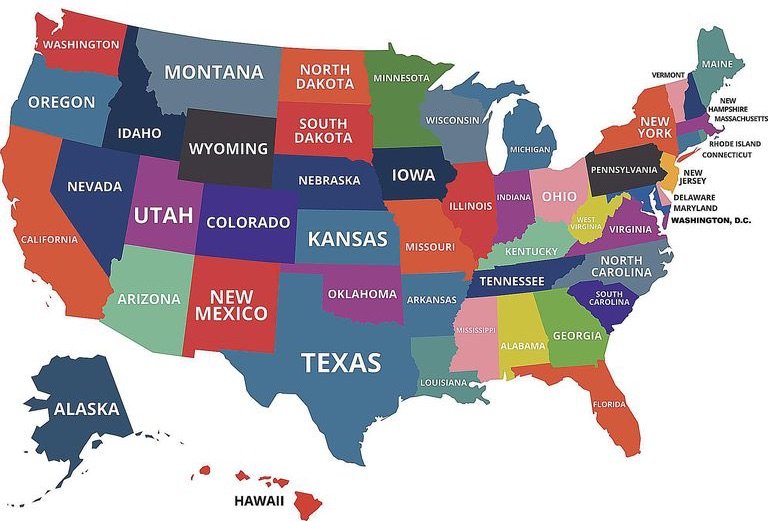NOTE: hover over words in blue for additional information
PART 1
The United States: A constitution-based federal republic
The United states is a federal, representative, democratic republic, a union of 50 sovereign States and a federal district (the District of Columbia, which is the capital of the United States). The government is federal because power is shared between the local, state and national levels; democratic because the people govern themselves and have the means to control the government; and it is is a republic because the people choose elected representatives by free and secret ballot.

First lines of the US Constitution
The Constitution is the basic and supreme law of the United States. It prescribes the structure of the U.S. Government, provides the legal foundation for all its actions, and enumerates and guarantees the rights of its citizens. The Constitution was prepared by a convention of delegates in Philadelphia in 1787.
The twenty-seven amendments approved since 1791 are also part of the Constitution. these include amendments 1 through 10, known collectively as the Bill of Rights, and amendments 11 through 27, which address a wide range of subjects. The Bill of Rights is a series of constitutionally protected rights of citizens, such as the right to freedom of religion, speech, and press (Amendment I), or the right to keep and bear arms (Amendment II).
TEST YOURSELF
QUESTIONS ON PART 1
1. How many independent states make up the United States?
2. In 3 words, how would you describe the government of the United States?
3. What is the most important law of the United States?
4. Who prepared the Constitution, where and when?
5. How many amendments have been approved since 1791?
6. What is the Bill of Rights?
7. What is Amendment I about?
8. What is Amendment II about?





